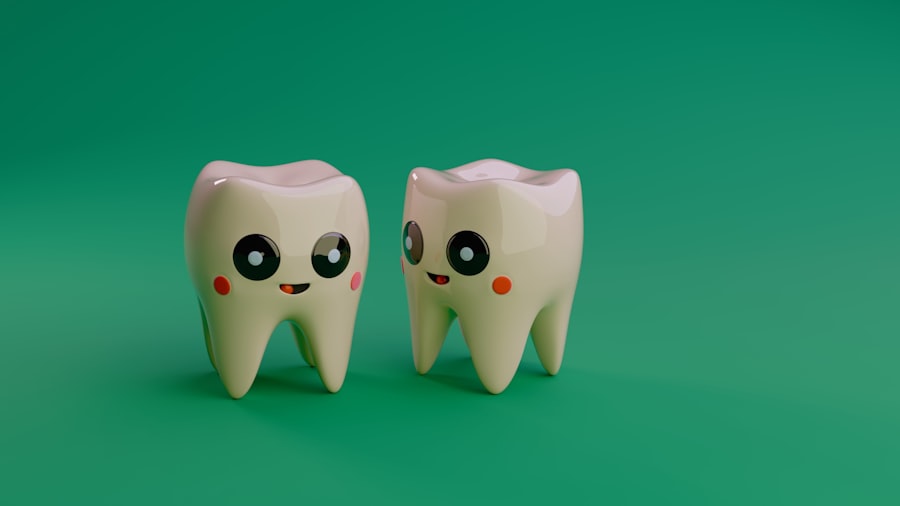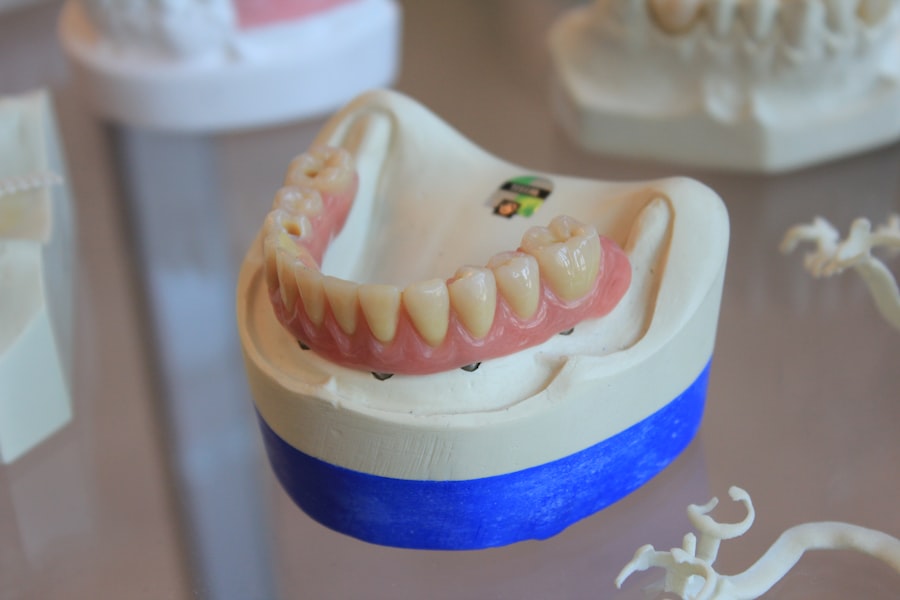To effectively market dental services, it is crucial to have a deep understanding of your target audience. This involves identifying the demographics, preferences, and needs of potential patients. For instance, a dental practice located in a suburban area may cater primarily to families, while an urban practice might attract young professionals or retirees.
Conducting surveys, analyzing patient data, and engaging in community outreach can provide valuable insights into who your patients are and what they seek in dental care. Moreover, understanding the psychological factors that influence patient decisions is equally important. Many individuals experience anxiety when it comes to dental visits, which can affect their willingness to seek treatment.
By recognizing these fears and addressing them through targeted messaging, practices can create a more inviting atmosphere. For example, highlighting a gentle approach to dentistry or showcasing a calming office environment can resonate with anxious patients. Tailoring marketing strategies to address these specific concerns can significantly enhance patient engagement and retention.
Key Takeaways
- Identify and understand your target audience to tailor marketing efforts effectively.
- Establish a strong online presence through a professional website and active social media profiles.
- Use SEO strategies to improve search engine rankings and increase website visibility.
- Leverage patient testimonials and reviews to build trust and credibility.
- Engage with the community and referring dentists through events and relationship-building activities.
Creating a Strong Online Presence
In today’s digital age, establishing a robust online presence is essential for any dental practice aiming to attract new patients. A well-designed website serves as the cornerstone of this presence, providing essential information about services, staff qualifications, and office hours. It should be user-friendly, mobile-responsive, and optimized for fast loading times to ensure a seamless experience for visitors.
Including high-quality images of the practice and staff can also help create a welcoming atmosphere before patients even step foot in the office. Beyond the website, maintaining an active presence on various online platforms is vital. This includes creating profiles on directories such as Google My Business, Yelp, and Healthgrades, where potential patients often search for local dental services.
These profiles should be regularly updated with accurate information and engaging content. Additionally, incorporating a blog into the website can enhance visibility by providing valuable information on dental health topics, thereby positioning the practice as an authority in the field. Regularly posting articles that address common dental concerns or new treatments can attract visitors and encourage them to schedule appointments.
Utilizing Social Media Platforms

Social media has transformed the way businesses interact with their audiences, and dental practices are no exception. Platforms like Facebook, Instagram, and Twitter offer unique opportunities to engage with current and potential patients in a more personal manner. By sharing informative content, such as oral health tips or behind-the-scenes glimpses of the practice, dentists can foster a sense of community and build trust with their audience.
Visual content is particularly effective on social media; therefore, practices should leverage high-quality images and videos to showcase their work. Before-and-after photos of cosmetic procedures or educational videos explaining various treatments can capture attention and encourage shares among followers. Additionally, running targeted ads on these platforms can help reach specific demographics based on location, age, and interests, ensuring that marketing efforts are directed toward those most likely to seek dental care.
Implementing Search Engine Optimization (SEO) Strategies
| SEO Strategy | Key Metrics | Typical Range / Benchmark | Purpose |
|---|---|---|---|
| Keyword Research | Search Volume, Keyword Difficulty, CPC | Volume: 1,000 – 100,000+; Difficulty: 10-80 | Identify valuable keywords to target for content optimization |
| On-Page Optimization | Title Tag Length, Meta Description Length, Keyword Density | Title: 50-60 characters; Meta: 150-160 characters; Density: 1-2% | Improve page relevance and user experience for targeted keywords |
| Technical SEO | Page Load Time, Mobile Usability Score, Crawl Errors | Load Time: <3 seconds; Mobile Score: 90-100; Crawl Errors: 0 | Ensure website is accessible and fast for both users and search engines |
| Content Creation | Content Length, Readability Score, Internal Links | Length: 1,000-2,500 words; Readability: Grade 6-8; Links: 3-5 per page | Provide valuable and engaging content to attract and retain visitors |
| Link Building | Number of Backlinks, Domain Authority, Referring Domains | Backlinks: 100+; DA: 30-70+; Referring Domains: 50+ | Increase site authority and improve rankings through quality backlinks |
| User Engagement | Bounce Rate, Average Session Duration, Pages per Session | Bounce Rate: <50%; Duration: >2 minutes; Pages: 3+ | Measure how users interact with the site to optimize experience |
| Local SEO | Google My Business Views, Local Pack Rankings, Reviews Count | Views: 1,000+ monthly; Rankings: Top 3; Reviews: 50+ | Enhance visibility in local search results and attract local customers |
Search Engine Optimization (SEO) is a critical component of digital marketing that helps improve a website’s visibility on search engines like Google. By optimizing content with relevant keywords related to dental services—such as “family dentist,” “cosmetic dentistry,” or “emergency dental care”—practices can increase their chances of appearing in search results when potential patients are looking for services online. In addition to keyword optimization, local SEO strategies are particularly important for dental practices.
This involves ensuring that the practice’s name, address, and phone number (NAP) are consistent across all online platforms and directories. Creating localized content that speaks to the community—such as blog posts about local events or partnerships with nearby businesses—can also enhance local search rankings. Furthermore, obtaining backlinks from reputable local websites can improve authority and visibility in search results.
Offering Promotions and Special Offers
Promotions and special offers can be powerful tools for attracting new patients and encouraging existing ones to return for additional services. For instance, offering a discount on initial consultations or teeth whitening treatments can entice individuals who may be hesitant to commit to dental care due to cost concerns. Seasonal promotions—such as back-to-school check-ups or holiday specials—can also create urgency and encourage patients to take action.
Additionally, referral programs that reward existing patients for bringing in new clients can foster loyalty while expanding the patient base. For example, offering a discount on future services for both the referring patient and the new patient can create a win-win situation that benefits everyone involved. These promotions should be communicated effectively through various channels, including social media, email newsletters, and in-office signage, ensuring that they reach the intended audience.
Building Relationships with Referring Dentists

Establishing strong relationships with referring dentists is an often-overlooked aspect of growing a dental practice. Many patients rely on their general practitioners for recommendations when seeking specialized care. By networking with local dentists and specialists—such as orthodontists or oral surgeons—practices can create a referral system that benefits all parties involved.
Regular communication is key to maintaining these relationships. This could involve scheduling lunch-and-learn sessions where practices share information about their services or hosting joint community events that promote oral health awareness. Additionally, sending thank-you notes or small tokens of appreciation to referring dentists can strengthen these connections and encourage continued collaboration.
By fostering a network of mutual referrals, practices can enhance their credibility within the community while expanding their patient base.
Utilizing Patient Testimonials and Reviews
In an era where online reviews significantly influence consumer decisions, leveraging patient testimonials can be an effective marketing strategy for dental practices. Positive reviews on platforms like Google or Yelp not only enhance credibility but also serve as powerful endorsements that can sway potential patients considering their options. Encouraging satisfied patients to leave reviews after their appointments can help build a robust online reputation.
Incorporating testimonials into marketing materials—such as brochures or social media posts—can further amplify their impact. Video testimonials can be particularly compelling; seeing real patients share their positive experiences can create an emotional connection with prospective clients. Additionally, addressing any negative reviews promptly and professionally demonstrates a commitment to patient satisfaction and can turn potentially damaging situations into opportunities for improvement.
Hosting Community Events and Workshops
Community engagement is an invaluable strategy for dental practices looking to establish themselves as trusted local providers. Hosting events such as free dental check-up days or educational workshops on oral hygiene can not only raise awareness about the importance of dental health but also position the practice as an integral part of the community fabric. These events provide opportunities for direct interaction with potential patients in a relaxed setting, allowing them to ask questions and learn more about available services.
Moreover, collaborating with local schools or organizations for health fairs or educational seminars can further enhance visibility within the community. Offering fun activities for children—such as dental-themed games or giveaways—can create positive associations with dental visits from an early age. By actively participating in community events and initiatives, practices can build lasting relationships with residents while promoting oral health awareness in an engaging manner.


